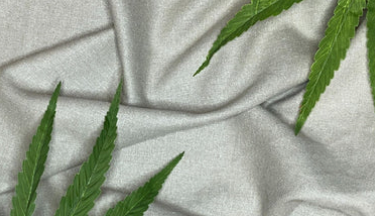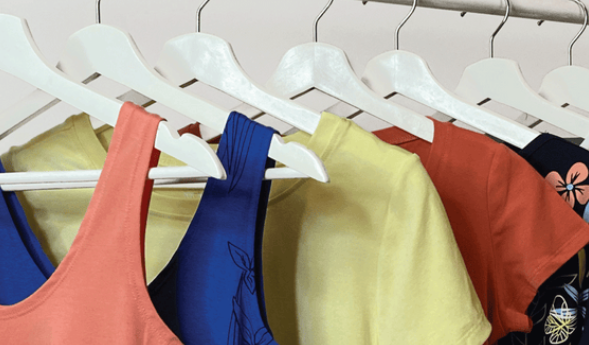Article: All About Hemp Fabric: The Fashion Guide

All About Hemp Fabric: The Fashion Guide
What is hemp?
Ancient civilizations have been using hemp since 8000 BC. Throughout history, hemp has been used in food, medicine, textiles, and paper. In addition to being an extremely useful plant for humans, hemp is a plant that has many benefits for the environment.
It is reported that every tonne of hemp produced generates 1.63 t of CO2. By producing energy and paper from hemp instead of trees, we help prevent deforestation. Industrial hemp has been scientifically proven to absorb more CO2 per hectare than any forest or commercial crop, making it an ideal carbon sink. Among other things, carbon dioxide is stored in the fibre which is used for textiles, paper and building materials.
Hemp is also a superfood. It is highly nutritious and can help reduce the risk of heart disease. Consuming hemp oil can lower cholesterol levels, reduce the risk of high blood pressure, and it is especially good for your skin. The love affair between humans, hemp, and the planet is not about to end. In this article, you will learn everything there is to know about hemp fabric made from industrial hemp, not to be confused with marijuana.
Hemp Fabric: How is it made?
Hemp or industrial hemp, is a plant in the Cannabaceae family that is grown for its bast fiber or edible seeds. Cannabis plants are often confused with hemp, which is the source of marijuana and hashish. Although both are from the Cannabis genus, industrial hemp is identified as having 0.3% THC or less.
Industrial hemp is the plant that is used to make hemp fabric. This fabric is made from the long strands of fiber that make up the stem of the plant. The fibers are separated from the bark through a process called "retting." These fibers are then spun together to produce a continuous thread that can be woven into fabric.
Is hemp sustainable?
Hemp is exceptionally positive for the environment. It requires 4 times less water to grow than cotton and does not require any pesticides or herbicides as it is naturally resistant to weeds and pests. One hectare of hemp can produce twice as many textiles as cotton. A wide range of biodegradable products can also be produced from hemp such as textiles, paper, packaging, bioplastics. By returning nutrients to the soil and sequestering carbon dioxide, hemp crops are beneficial for the environment. Unlike cotton and linen, which deplete the soil of nutrients, hemp can be grown consecutively for over twenty years without the soil being affected. This extraordinary plant also saves jobs! Hemp is harvested and processed by hand, which creates jobs. Fabrics made from hemp can really last over time. It is said that a hemp t-shirt will last 2 or 3 times longer than a cotton t-shirt.
Why Hemp Clothing is Good for You?
Before the first wash, hemp clothing may feel a little rough, but the more you wear and wash it, the softer and more comfortable it becomes. Hemp clothing also has the property of retaining colors better than any other textile. The fabric resists the growth of bacteria and breathes easily, which prevents odors. In winter, it keeps you warm, while in summer, it keeps you cool. Hemp fabric can also provide you with almost complete UV protection, making it one of the most durable fabrics on the planet.

Hemp vs. Flax: Which is Better?
The textures of hemp and linen are very similar. Since hemp fiber is the longest in the world, it is stronger and more durable. Linen fibers are shorter, which is why they wrinkle so much and become more fragile over time. While both fabrics seem eco-friendly, linen is a byproduct of the flax plant. Growing this plant depletes the soil over time, and herbicides are needed to keep weeds at bay. Finally, hemp is a great source of pollen that helps support the world's bee population, unlike flax crops, which have a negative impact on biodiversity. When it's time to buy new clothes, you might want to consider hemp pants and dresses to replace linen in your wardrobe.
Can I wear hemp clothing with style?
When you think of hemp clothing, you might imagine a boxy beige shirt paired with slightly stiff pants of the same color. Nothing comfortable, flattering or very “glamorous”. Fortunately, times have changed!
The popularity of this plant has led to the development of a whole new range of materials. Woven or knitted, hemp is now available in different types of fabrics and can be worn all year round. Hemp clothing can also be made with blended materials. Depending on the season or use, hemp is mixed with other yarns, such as organic cotton, Tencel®, recycled polyester, bamboo, etc. These blends offer the consumer the best of both yarns. Canvas, poplin, jersey, fleece can be made from hemp, which offers designers and fashion designers many possibilities for their collections.
No matter what style you are looking for, it is now possible to find hemp in today's fashion. From blouses to dresses to tunics as well as pants, skirts and shorts; everything in your wardrobe can be made from hemp.
Why choose hemp fabric?
Taking care of the soil, capturing carbon dioxide and providing pollen to bees around the world, hemp is certainly one of the best plants for the planet. Growing hemp also helps reduce global warming, as one acre of hemp can remove 10 tons of carbon from the atmosphere. That’s more than the average household emits in a year. In addition to being good for the planet, “hempcrete” could be used in carbon-intensive industries like construction, replacing concrete as a carbon-neutral material. Every part of the hemp plant can be used, so it leaves no waste. All parts of the plant, such as the seeds, leaves, roots, stems, can be transformed into something useful, such as oil, paper and especially fabric. Because the most effective way to promote sustainability today is to reuse, recycle and reduce our waste. Without a doubt, hemp is a valuable resource to help us on this journey.

